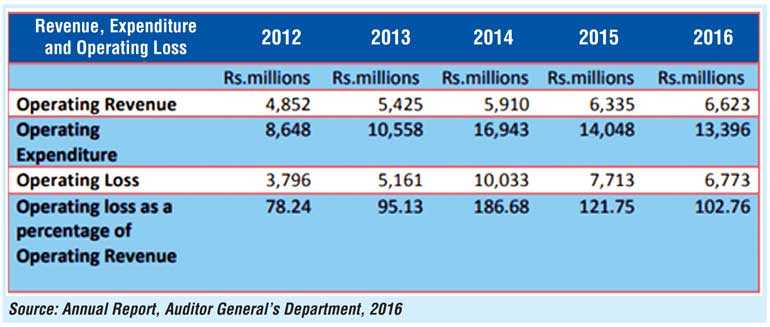Saturday Dec 14, 2024
Saturday Dec 14, 2024
Thursday, 23 August 2018 00:00 - - {{hitsCtrl.values.hits}}
 This recent train strike by railway trade unions erupted due to a demand for higher salaries for railway staff – Pic by Shehan Gunasekara
This recent train strike by railway trade unions erupted due to a demand for higher salaries for railway staff – Pic by Shehan Gunasekara
By Anuki Premachandra and Dilshani Ranawaka
The back story
The Railway strikes are over. At least for now. On 8 August, several railway unions called a sudden strike in the afternoon hours, right before tired office commuters would flock the Fort railway station to head home after a long day’s work. For the rest of the week, the railway trade unions crippled a key part of the transportation system in the country. The headline ‘Railway strike continues’ overwhelmed papers, news and social media alike.
This was the 14th time since 2017 the railway unions decided to strike, putting their demands ahead of the needs of more than 350,000 daily commuters. But this time, commuters had had enough! Angry commuters turned against the unions and the Government, some even calling for the privatisation of the train service. This most recent five-day strike is said to have caused a departmental loss of Rs. 64 million, leading to an increase in future railway ticket fares by 15%.
Is the call for rail privatisation practical? Financials of Sri Lanka Railways (SLR) for the past few years show that the losses made are as persistent and routinely as the losses made by Sri Lankan Airlines.
If SriLankan Airlines is in the ‘restructuring’ basket, why isn’t Sri Lanka Railways?
Deciphering the financials
Sri Lanka Railways (SLR) performance reports and Central Bank annual reports show that SLR has been incurring operating losses of Rs. 7.7 billion in 2015, Rs. 6.8 billion in 2016, and Rs. 7.5 billion in 2017.
A big component of recurrent expenditure that makes up a portion of ‘operating expenditure’ are salaries and wages. This recent train strike by railway trade unions erupted due to a demand for higher salaries for railway staff. Recent pay sheets published by the Ministry of Transport’s Media Division, shared vehemently via Social Media, show that the monthly earnings for certain categories of staff at Sri Lanka Railways are many times the wages of the average worker in the private sector.
Sri Lankans are naturally outraged that the money pumped into the system, both as commuters and taxpayers, are having such poor returns of inefficient service and sudden strikes.
Another side of the coin are the low fares charged to the commuters. Fares per kilometre range from 50 cents to a maximum of Rs. 2 for second and third class travel. First class fares range from Rs. 1.60 to Rs. 3.60 per kilometre.
The result is that railway revenues are not even sufficient to cover the salaries of workers. In 2016, salaries exceeded revenue by 32%. This is not a recent problem. Expenditure of the railways exceeded revenue by 52% in 1968, roughly the same as 2016.
Successive governments have preferred the status quo over bold reform, which will face resistance from both unions and commuters.
But reforms are needed. What are the options?

Is there a solution in privatisation?
Given political realities, wholesale privatisation is not a realistic option. Even if politics can be manoeuvred – an unlikely scenario – the Government would be hard-pressed to find a private investor willing to take on such a large and risky investment.
The World Bank, in a discussion paper on railway restructuring and privatisation, identified certain significant models driven out of case studies of the developing world that could be applicable to Sri Lanka. A few successful reforms are to offer stocks to separate companies (based on various scenarios such as geographical factors, purpose, etc.), design multi-phase enterprise development programs, and restructure and provide concessions to loss-making SOEs.
In the case of SLR, the restructuring process could be through private-public partnerships (PPPs). Realistically, short-term reform objectives should be to introduce competition where possible and structural reforms that increase accountability. Private sector involvement could help in areas such as freight, real estate management, catering, and tourist or ‘luxury’ coaches, as experimented earlier. A system that will welcome private involvement and break the State monopoly is the long-term solution to service delivery issues on railways.
A likely success strategy is to get the private sector involved in a more advanced train service altogether. Work on the Colombo Light Rail project is currently underway, and this is an example of where the asset’s ownership will lie with the State but the private sector will run the operation of it.
Currently, the SLR operates as a monolith department. Its official classification makes it a notable absentee from the list of 55 ‘strategically important’ State enterprises compiled by the Finance Ministry.
A first step towards accountability is to split the rail track and station operations from the actual running of train services. This allows for an environment where private operators could enter into train operations and other services on their own terms, resulting in a more competitive system. Competition will no doubt increase service delivery and choice.
The alternatives are not entirely new, and like in the past, even this limited proposal will be opposed by the unions. But, reforms tend to happen in crisis: when people reject old ideas and look for new ones. With organic calls for privatisation, that time may be approaching for Sri Lanka’s railways.
(Anuki Premachandra is the Assistant Manager – Research Communications at the Advocata Institute, and Dilshani Ranawaka is an undergraduate reading for her Degree in Economics at the University of Colombo. Advocata is an independent policy think tank based in Colombo, Sri Lanka. They conduct research, provide commentary and hold events to promote sound policy ideas compatible with a free society in Sri Lanka. Visit www.advocata.org for more information.)